Home>Articles>Why Is My Car Blowing Hot Air Out Of The Vents When AC Is Off
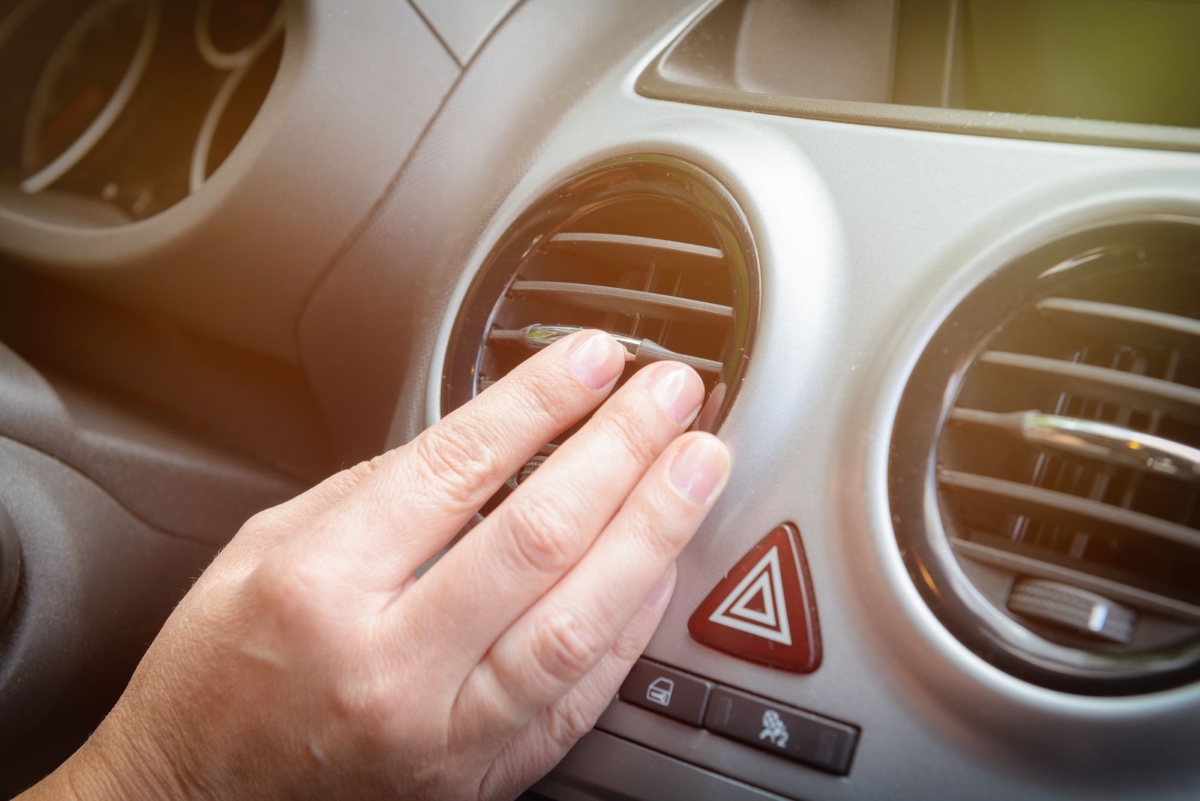

Articles
Why Is My Car Blowing Hot Air Out Of The Vents When AC Is Off
Modified: February 27, 2024
Discover why your car is blowing hot air out of the vents when the AC is off in our informative articles. Find solutions and tips to keep your cabin cool and comfortable.
(Many of the links in this article redirect to a specific reviewed product. Your purchase of these products through affiliate links helps to generate commission for Storables.com, at no extra cost. Learn more)
Introduction
There’s nothing more frustrating than stepping into your car on a hot summer day, only to be greeted by a blast of hot air coming from the vents, even when your car’s AC system is turned off. It’s not only uncomfortable, but it can also be a sign of an underlying issue with your vehicle’s cooling system.
While it’s normal for some residual heat to remain in the air vents after you turn off the AC, a consistent flow of hot air indicates that something is amiss. Understanding the common causes of hot air coming from the vents when the AC is off can help you diagnose and fix the problem, ensuring a comfortable driving experience.
In this article, we will explore the possible reasons behind this issue and discuss the steps you can take to identify and resolve the problem.
Key Takeaways:
- Don’t sweat it! Hot air from your car’s vents when the AC is off could be due to engine overheating, faulty heater valve, or electrical issues. Addressing these problems will keep you cool on the road.
- Keep your cool by diagnosing and fixing the root cause of hot air from your car’s vents. From checking the engine temperature to troubleshooting the electrical system, proper maintenance ensures a comfortable driving experience.
Read more: Why Is My AC In My Car Blowing Hot Air
Common Causes of Hot Air Coming from Vents When AC is Off
When your car blows hot air from the vents even when the AC is off, several factors could be to blame. Here are some common causes to consider:
- Engine Overheating: One possible cause is an overheating engine. When the engine gets too hot, it can transfer heat to the air conditioning system, causing warm air to circulate in the cabin even when the AC is turned off.
- Faulty Heater Valve: The heater valve controls the flow of hot coolant through the heating system. If the valve is stuck in the open position, hot coolant can enter the system and lead to hot air blowing from the vents.
- Malfunctioning Blend Door: The blend door is responsible for directing the airflow from either the AC or the heating system. If the blend door gets stuck or damaged, it may get stuck in the heat mode, causing hot air to come out of the vents.
- Air Recirculation Issues: When the air recirculation system fails, fresh air from outside can mix with the heated air inside the vehicle, resulting in hot air blowing from the vents.
- Damaged Cooling System: A damaged or clogged cooling system can impact the overall performance of the air conditioning system, resulting in the circulation of warm air.
- Electrical Problems: Electrical issues, such as a malfunctioning temperature sensor or a wiring problem, can disrupt the proper functioning of the HVAC system, leading to the circulation of hot air.
Identifying the specific cause of the hot air issue can help you determine the appropriate steps to fix it. In the following sections, we will discuss how to diagnose the problem and explore possible solutions that can help you resolve the issue.
Engine Overheating
When your car’s engine overheats, it can affect the functionality of the entire cooling system, including the air conditioning system. An overheating engine can transfer excessive heat to the AC system, causing hot air to blow from the vents even when the AC is off.
There are several reasons why an engine may overheat, including:
- Low coolant level: Insufficient coolant can lead to inadequate heat transfer and result in engine overheating.
- Faulty radiator fan: A malfunctioning radiator fan may not be able to cool down the radiator effectively, causing the engine to overheat.
- Thermostat malfunction: A faulty thermostat can prevent the coolant from flowing properly, leading to engine overheating.
- Leaking coolant: Coolant leaks can cause a drop in coolant levels, leading to engine overheating.
If you suspect that engine overheating is the cause of hot air coming from the vents, it’s important to address this issue promptly to prevent further damage to your vehicle. Here are some steps to diagnose and address engine overheating:
- Check the coolant level: Ensure that the coolant level is within the appropriate range. If it’s low, refill it with the recommended coolant.
- Inspect the radiator fan: Turn on your car and let the engine warm up. Observe if the radiator fan kicks on when the engine reaches a certain temperature. If it doesn’t, there may be an issue with the fan or its control system.
- Check the thermostat: If the thermostat is malfunctioning, it may not be opening and closing properly, affecting coolant flow. Consider replacing the thermostat if necessary.
- Look for coolant leaks: Inspect for any visible signs of coolant leaks, such as puddles or stains underneath your car. If you find any leaks, have them repaired immediately.
By addressing any engine overheating issues, you can prevent hot air from blowing out of the vents when the AC is turned off. If the problem persists or you are unable to diagnose the issue, it’s recommended to consult with a professional mechanic for further assistance.
Faulty Heater Valve
A faulty heater valve can also be a common cause of hot air coming from the vents when the AC is turned off. The heater valve controls the flow of hot coolant through the heating system, allowing you to adjust the temperature inside the vehicle. When the valve gets stuck in the open position or fails to close properly, hot coolant can enter the system and result in hot air blowing from the vents.
Here are some signs that may indicate a faulty heater valve:
- Continuous flow of hot air from the vents, even when the AC is off
- Inability to adjust the temperature inside the vehicle
- Leaking coolant near the heater valve
If you suspect a faulty heater valve, here are some steps to diagnose and address the issue:
- Check the heater control valve: Locate the heater control valve, which is typically located near the firewall in the engine compartment. Inspect the valve for any signs of damage or leaks.
- Test the valve operation: Start your vehicle and let the engine warm up. Adjust the temperature controls from hot to cold and observe if the temperature of the air coming from the vents changes. If there is no change, it may indicate a faulty valve.
- Inspect the valve actuator: The heater valve is often operated by a vacuum or an electric actuator. Ensure that the actuator is functioning properly and is receiving the necessary signals to open and close the valve.
- Replace or repair the heater valve: If you determine that the heater valve is faulty, it may need to be repaired or replaced. Consult with a professional mechanic to determine the best course of action.
Addressing a faulty heater valve can help resolve the issue of hot air coming from the vents when the AC is off. If you are unsure about the diagnosis or require assistance, it is recommended to seek the help of a qualified automotive technician.
Malfunctioning Blend Door
A malfunctioning blend door can also be a culprit when it comes to hot air coming from the vents when the AC is turned off. The blend door is responsible for directing the airflow from either the AC or the heating system. If the blend door gets stuck or damaged, it may get stuck in the heat mode, causing hot air to blow out of the vents.
Here are some signs that may indicate a malfunctioning blend door:
- Consistent flow of hot air from the vents, regardless of the temperature settings
- Inability to achieve the desired temperature inside the vehicle
- Unusual clicking or knocking sounds coming from the dashboard when adjusting the temperature controls
To diagnose and address a malfunctioning blend door, you can follow these steps:
- Locate the blend door: The blend door is typically located in the HVAC system, behind the dashboard. Consult your vehicle’s manual or seek professional guidance to locate the exact position of the blend door.
- Inspect the blend door: Observe the blend door for any visible signs of damage, such as cracks or broken parts. Additionally, check for any obstructions that may be causing the door to get stuck.
- Manually operate the blend door: Depending on the accessibility of the blend door, you may be able to manually operate it. Carefully adjust the door’s position and observe if the airflow changes from hot to cold or vice versa.
- Repair or replace the blend door: If you determine that the blend door is malfunctioning, you may need to repair or replace it. In some cases, the blend door actuator or motor may need to be replaced as well. Consult with a professional mechanic for proper guidance and to ensure a correct fix.
Fixing a malfunctioning blend door can restore the proper function of the HVAC system and eliminate the issue of hot air coming from the vents when the AC is off. If you are unsure about the diagnosis or require assistance, it is advisable to seek the help of a qualified automotive technician.
Read more: Why Is My Car AC Not Blowing Cold Air
Air Recirculation Issues
When the air recirculation system in your vehicle fails to function properly, it can result in hot air coming from the vents even when the AC is turned off. The air recirculation system is responsible for controlling the flow of fresh air from outside or recirculating the air already present inside the cabin. If this system malfunctions, fresh outside air can mix with the heated air inside the vehicle, leading to hot air blowing from the vents.
Here are some signs that may indicate air recirculation issues:
- Continuous flow of hot air, even in recirculation mode
- Inconsistent temperature control inside the vehicle
- Unusual odors or smells entering the cabin
If you suspect air recirculation issues, you can follow these steps to diagnose and address the problem:
- Check the recirculation switch: Ensure that the recirculation switch or button is in the correct position and functioning effectively. Sometimes, a loose or faulty switch can cause issues with the air recirculation system.
- Inspect the cabin air filter: A clogged or dirty cabin air filter can affect the airflow and recirculation of air inside the vehicle. Check the condition of the cabin air filter and replace it if necessary to improve the performance of the air recirculation system.
- Examine the recirculation door or flap: The recirculation door or flap is responsible for directing the airflow. Check if it is stuck, damaged, or obstructed. If necessary, clean or repair the recirculation door to restore proper functionality.
- Consider professional assistance: If the issue persists or you are unable to diagnose the problem, it is recommended to consult with a professional mechanic who can perform a thorough inspection and provide appropriate solutions.
Addressing air recirculation issues can help eliminate the hot air coming from the vents when the AC is turned off. If you are unsure about the diagnosis or require assistance, it is best to seek the help of a qualified automotive technician.
Damaged Cooling System
A damaged cooling system in your vehicle can impact the performance of the air conditioning system, resulting in the circulation of warm air from the vents even when the AC is turned off. The cooling system is responsible for regulating the engine temperature and ensuring proper heat transfer. If it becomes damaged or compromised, it can affect the overall cooling efficiency, leading to hot air blowing from the vents.
Here are some signs that may indicate a damaged cooling system:
- Engine temperature consistently rising above normal
- Coolant leaks or puddles underneath the vehicle
- Steam or smoke coming from the engine compartment
- Visible damage to the radiator, hoses, or water pump
If you suspect a damaged cooling system, it’s essential to address the issue promptly to prevent further damage to your vehicle. Here are some steps to diagnose and resolve the problem:
- Check coolant levels: Ensure that the coolant level is within the recommended range. If it’s low, top it up with the appropriate coolant mixture.
- Inspect the radiator: Examine the radiator for any signs of damage, such as leaks or blockages. Clean or repair the radiator as needed.
- Check hoses and connections: Inspect the coolant hoses and connections for any leaks, cracks, or loose fittings. Replace or repair any damaged components.
- Test the water pump: The water pump is responsible for circulating the coolant throughout the cooling system. Test the water pump to ensure that it is functioning properly. If it’s faulty, replace it.
- Consider professional assistance: If you are unable to diagnose or address the issue yourself, it is advisable to seek the help of a professional mechanic who can perform a detailed inspection and provide the necessary repairs or replacements.
Fixing the damaged cooling system will help restore the cooling efficiency of your vehicle and prevent the circulation of hot air from the vents. If you are unsure about the diagnosis or require assistance, it’s best to consult with a qualified automotive technician.
Electrical Problems
Electrical problems can also contribute to the issue of hot air blowing from the vents when the AC is turned off. The HVAC (heating, ventilation, and air conditioning) system in your vehicle relies on various electrical components to regulate temperature and control airflow. If there are any malfunctions or issues with these electrical components, it can disrupt the proper functioning of the system, resulting in the circulation of hot air.
Here are some signs that may indicate electrical problems:
- Inconsistent temperature control inside the vehicle
- Faulty AC compressor operation
- Intermittent functioning of the blower motor
- Malfunctioning temperature sensor
To diagnose and address electrical problems related to the HVAC system, you can follow these steps:
- Check the fuses and relays: Start by inspecting the fuses and relays associated with the HVAC system. A blown fuse or faulty relay can disrupt the electrical supply and affect the operation of the AC system. Replace any blown fuses or faulty relays as necessary.
- Test the temperature sensor: The temperature sensor measures the temperature inside the vehicle and signals the HVAC system to adjust accordingly. Use a multimeter to test the sensor’s resistance and ensure it is providing accurate readings. Replace the temperature sensor if it’s faulty.
- Inspect the blower motor: The blower motor is responsible for controlling the airflow inside the vehicle. Check for any signs of damage or obstruction that may be affecting its operation. Replace the blower motor if necessary.
- Check the AC compressor: The AC compressor is the heart of the air conditioning system. Inspect it for any signs of damage or malfunction. If the compressor is not operating correctly, it may need to be repaired or replaced.
- Consider professional assistance: If the electrical problems persist or you are unable to diagnose the issue, it’s recommended to consult with a professional automotive technician who has experience in electrical systems.
Addressing electrical problems in the HVAC system can help resolve the issue of hot air coming from the vents when the AC is turned off. If you are unsure about the diagnosis or require assistance, it is best to seek the help of a qualified automotive technician.
How to Diagnose the Issue
When you experience hot air coming from the vents when the AC is turned off, it’s important to properly diagnose the issue in order to identify the specific cause and find an appropriate solution. Here are some steps to help you diagnose the problem:
- Checking the Engine Temperature: Start by monitoring the temperature gauge on your dashboard. If the engine temperature is consistently high or fluctuating, it could indicate an overheating issue or a problem with the cooling system.
- Testing the Heater Valve: Inspect the heater valve to ensure it is functioning properly. Check if it is stuck in the open position or if there are any signs of leaks. You can test the valve by adjusting the temperature controls and observing any changes in the airflow and temperature from the vents.
- Inspecting the Blend Door: Locate the blend door and check if it is stuck or damaged. Manually adjusting the position of the blend door and observing the airflow changes can help determine if it’s a blend door issue.
- Examining the Air Recirculation System: Inspect the air recirculation switch or button to ensure it is functioning correctly. Check for any obstructions or malfunctions in the recirculation system that may be causing the hot air to enter the cabin.
- Evaluating the Cooling System: Check the coolant level and inspect the radiator, hoses, and water pump for any leaks, damage, or blockages. Ensure that the cooling system is in proper working condition and providing sufficient cooling to the engine.
- Inspecting the Electrical Components: Check the fuses, relays, temperature sensor, blower motor, and AC compressor for any malfunctions or damage. Test the electrical components using appropriate tools to ensure they are operating correctly.
By following these diagnostic steps, you can gather valuable information about the possible causes of the issue. However, it’s important to note that diagnosing complex automotive problems can be challenging and may require the expertise of a professional mechanic. If you are uncertain or unable to diagnose the issue yourself, it’s recommended to consult with a qualified automotive technician for accurate diagnosis and proper repairs.
Read more: Car AC Blowing Hot Air How To Fix
Checking the Engine Temperature
When you experience hot air coming from the vents when the AC is turned off, the first step in diagnosing the issue is to check the engine temperature. Engine overheating can contribute to the problem and indicate an underlying cooling system issue.
Here are some steps to check the engine temperature:
- Start your vehicle and allow it to idle for a few minutes to warm up.
- Observe the temperature gauge on the dashboard. It is typically located next to or within the cluster of other gauges.
- Monitor the temperature gauge as you drive. If the needle on the gauge consistently rises above the normal range or fluctuates erratically, it could indicate an overheating issue.
- If the engine temperature reaches dangerously high levels or if you notice steam or smoke coming from the engine compartment, pull over to a safe location and turn off the engine immediately. Continuing to drive an overheating vehicle can cause severe damage.
If you notice any signs of overheating, it’s essential to address the issue promptly to prevent further damage. Here are some possible causes of engine overheating:
- Low coolant level: Insufficient coolant can lead to inadequate cooling and cause the engine to overheat.
- Faulty radiator fan: A malfunctioning radiator fan may not effectively cool the radiator, which can result in engine overheating.
- Failed thermostat: A faulty thermostat can prevent proper coolant circulation and lead to engine overheating.
- Coolant leaks: Leaking coolant can result in a low coolant level and cause the engine to overheat.
If you suspect an overheating issue, it’s advisable to stop driving your vehicle and consult with a professional mechanic. They can perform a thorough inspection of the cooling system, identify the cause of the overheating, and recommend the necessary repairs or replacements.
Testing the Heater Valve
To diagnose the issue of hot air coming from the vents when the AC is turned off, it’s essential to test the functionality of the heater valve. The heater valve controls the flow of hot coolant to the heating system, and if it is stuck or malfunctioning, it can cause hot air to circulate in the cabin.
Here’s how you can test the heater valve:
- Locate the heater valve: The heater valve is typically situated near the firewall in the engine compartment. Consult your vehicle’s manual or seek guidance for the exact location.
- Start your vehicle and let the engine reach its normal operating temperature.
- Adjust the temperature controls: Turn the temperature control knob or dial from hot to cold and vice versa. Observe if the temperature of the air from the vents changes accordingly.
- Listen for clicks and changes in airflow: When you adjust the temperature controls, listen for clicking sounds coming from the heater valve area. These clicks indicate that the valve is opening or closing to regulate the coolant flow. Additionally, pay attention to any changes in the airflow or temperature from the vents.
- Inspect for leaks: While testing the heater valve, inspect for any signs of leaks around the valve. Leaks can indicate a faulty valve and should be addressed promptly.
If you find that the heater valve is stuck in the open position, allowing hot coolant to flow into the heating system, it may be the cause of the hot air coming from the vents. Similarly, if the valve fails to open, it can restrict the flow of coolant and result in insufficient heating or cooling.
If you suspect a problem with the heater valve, it’s recommended to consult with a professional mechanic for a more accurate diagnosis and appropriate repairs. They will be able to examine the valve, perform additional tests if necessary, and determine whether it needs to be repaired or replaced.
Check your car’s cooling system for any leaks or blockages. A common cause of hot air coming out of the vents when the AC is off is a malfunctioning blend door or a problem with the heater core. Have a professional mechanic inspect and repair any issues.
Inspecting the Blend Door
To further diagnose the issue of hot air coming from the vents when the AC is turned off, it’s important to inspect the blend door. The blend door is responsible for directing the airflow from either the AC or the heating system, and if it becomes stuck or damaged, it can result in hot air blowing out of the vents.
Here’s how you can inspect the blend door:
- Locate the blend door: The blend door is typically located within the HVAC system, behind the dashboard or in the air ducts of your vehicle. Refer to your vehicle’s manual or seek professional guidance to locate the exact position of the blend door.
- Visually inspect the blend door: Carefully examine the blend door for any visible signs of damage, such as cracks or broken parts. Check for any obstructions that may be causing the door to get stuck in one position.
- Manually operate the blend door: Depending on the accessibility of the blend door, you may be able to manually operate it. With the HVAC system turned on, gently adjust the position of the blend door and observe if there are any changes in the airflow and temperature from the vents. If the door feels stuck or does not move smoothly, it may indicate a problem.
If you determine that the blend door is stuck or damaged, it can lead to the continuous flow of hot air from the vents. In some cases, the blend door actuator or motor may also be at fault. The actuator is responsible for controlling the movement of the blend door based on the temperature settings.
If you are unsure about the diagnosis or require assistance with inspecting or repairing the blend door, it is recommended to consult with a professional automotive technician. They will have the necessary expertise and tools to access and inspect the blend door properly, and provide you with the appropriate repairs or replacements if needed.
Examining the Air Recirculation System
To further diagnose the issue of hot air coming from the vents when the AC is turned off, it’s important to inspect the air recirculation system. The air recirculation system controls whether the HVAC system pulls in fresh outside air or recirculates the air already present inside the cabin. If this system malfunctions, it can result in the mixture of hot outside air with the heated air inside the vehicle, leading to hot air blowing from the vents.
Here’s how you can examine the air recirculation system:
- Locate the recirculation switch or button: The recirculation button is typically found on the HVAC controls or the dashboard. Refer to your vehicle’s manual to locate the exact position of the recirculation switch.
- Operate the recirculation system: With the HVAC system turned on, engage the recirculation mode by pressing the appropriate button or switch. Observe if the system is properly engaging and whether the airflow from the vents changes.
- Check for obstructions or malfunctions: Inspect the recirculation system for any physical obstructions, such as debris or objects, that may be preventing proper operation. Additionally, listen for any unusual sounds or vibrations when activating the recirculation system.
If you find that the air recirculation system is not working as expected, it can contribute to hot air coming from the vents. In some cases, a malfunctioning recirculation door or actuator may be responsible for the issue.
If you are unable to diagnose or address the problem with the air recirculation system, it’s recommended to consult with a professional automotive technician. They will have the necessary expertise to examine and troubleshoot the system effectively, and provide you with the appropriate repairs or replacements if needed.
Read more: Why Is The AC Blowing Hot Air
Evaluating the Cooling System
When troubleshooting the issue of hot air coming from the vents when the AC is turned off, it’s crucial to evaluate the performance of your vehicle’s cooling system. A damaged or compromised cooling system can affect the overall cooling efficiency, leading to the circulation of warm air instead of cool air.
Here’s how you can evaluate the cooling system:
- Check the coolant level: Start by checking the coolant level in the radiator or coolant reservoir. Ensure it is within the recommended range. If the coolant level is low, it can result in inadequate cooling and contribute to the problem of hot air from the vents.
- Inspect the radiator: Examine the radiator for any visible signs of damage, such as leaks, cracks, or corrosion. Check that the radiator fins are not clogged with dirt or debris, as it can restrict the airflow and cooling efficiency.
- Check the hoses and connections: Inspect the coolant hoses and connections for any signs of leaks, cracks, or loose fittings. Make sure all connections are secure and the hoses are in good condition. Damaged hoses can lead to coolant leaks and affect the cooling system performance.
- Test the water pump: The water pump is responsible for circulating the coolant throughout the cooling system. Ensure that the water pump is functioning properly, as a malfunctioning pump can result in insufficient coolant flow and inadequate cooling.
If you notice any issues during the evaluation of the cooling system, it’s important to address them promptly. Here are some possible causes of cooling system problems:
- Coolant leaks: Coolant leaks can occur due to a damaged hose, radiator, water pump, or gasket. Leaks can lead to a loss of coolant, resulting in an ineffective cooling system.
- Faulty radiator fan: A malfunctioning radiator fan can fail to cool the radiator effectively, causing the engine temperature to rise and affecting the cooling system’s performance.
- Clogged radiator or coolant passages: Over time, the radiator or coolant passages can become clogged with debris, sludge, or mineral deposits, restricting proper coolant flow and heat dissipation. This can result in reduced cooling efficiency.
If you are uncertain about any aspect of evaluating the cooling system or require assistance, it’s best to consult with a professional mechanic. They have the expertise and tools to perform a detailed inspection, diagnose any cooling system issues accurately, and provide the necessary repairs or replacements to restore optimal cooling performance.
Inspecting the Electrical Components
When dealing with the issue of hot air coming from the vents when the AC is turned off, it’s important to inspect the electrical components of the HVAC system. Electrical problems can disrupt the proper functioning of the system, leading to the circulation of hot air instead of cool air.
Here’s how you can inspect the electrical components:
- Check the fuses and relays: Inspect the fuses and relays associated with the HVAC system. A blown fuse or a faulty relay can interrupt the electrical supply and affect the operation of the AC system. Replace any blown fuses or faulty relays as needed.
- Test the temperature sensor: The temperature sensor measures the temperature inside the vehicle and signals the HVAC system to adjust accordingly. Use a multimeter to test the sensor’s resistance and ensure it is providing accurate readings.
- Inspect the blower motor: The blower motor is responsible for airflow inside the cabin. Inspect the motor for any signs of damage, such as worn-out brushes or a burnt-out motor. Ensure that the blower motor is receiving the proper electrical connections and functioning correctly.
- Check the AC compressor: The AC compressor is responsible for compressing the refrigerant and circulating it through the AC system. Inspect the compressor for any physical damage or leaks. Ensure that it is receiving power and engaging properly.
If you notice any issues during the inspection of the electrical components, it’s important to address them promptly. Some possible causes of electrical problems in the HVAC system include:
- Faulty wiring or connectors: Damaged or loose wiring connections can disrupt the electrical flow and result in improper operation of the HVAC system.
- Malfunctioning control panels or switches: A malfunctioning control panel or switches can prevent the proper adjustment of temperature and airflow settings, leading to the circulation of hot air.
- Defective actuators or motors: Actuators or motors control the movement of blend doors, flaps, and mode doors in the HVAC system. If an actuator or motor malfunctions, it can result in incorrect airflow control and the circulation of hot air.
If you encounter difficulties during the inspection of electrical components or require assistance, it’s recommended to consult with a professional automotive technician. They have the expertise and diagnostic tools to assess and troubleshoot electrical issues accurately. They can provide the necessary repairs or replacements to resolve any electrical problems in the HVAC system.
Solutions to Fix the Problem
After diagnosing the issue of hot air blowing from the vents when the AC is turned off, it’s important to implement the appropriate solutions to fix the problem. The solution will depend on the specific cause identified during the diagnosis. Here are some common solutions to address the issue:
- Cooling System Repairs: If a damaged or compromised cooling system is identified as the cause, it’s important to address the issue promptly. This may involve repairing or replacing components such as the radiator, water pump, hoses, or thermostat. Ensuring proper cooling system function can help prevent hot air circulation.
- Repairing or Replacing the Heater Valve: If the heater valve is found to be faulty or stuck, it may need to be repaired or replaced. A professional mechanic can evaluate the exact condition of the valve and perform the necessary repairs or replacements to restore proper operation.
- Fixing the Blend Door: If the blend door is stuck or damaged, it may require repairs or replacement. The exact solution will depend on the extent of the issue. A qualified technician can accurately assess and resolve blend door problems to ensure proper airflow control and eliminate the circulation of hot air.
- Resolving Air Recirculation Issues: If the air recirculation system is malfunctioning, it may need to be repaired. This could involve fixing or replacing components such as the recirculation door or actuator. An automotive professional can diagnose the specific issue and recommend the appropriate repairs to restore proper functioning.
- Electrical System Troubleshooting: If electrical problems are identified, it’s important to address them accordingly. This may involve fixing wiring issues, replacing faulty switches or controls, or repairing malfunctioning motors or actuators. An experienced mechanic can accurately diagnose and resolve electrical problems in the HVAC system.
It’s important to note that not all solutions can be implemented by the average car owner. Complex repairs, such as those involving the cooling system or electrical components, are best left to professional automotive technicians. They have the expertise, experience, and tools necessary to perform accurate diagnostics and implement the appropriate solutions.
If you have identified the cause of the problem but are unsure how to proceed with the necessary repairs, it’s recommended to consult with a qualified mechanic. They can guide you through the repair process, provide expert advice, and ensure that the issue is resolved effectively.
Cooling System Repairs
One of the possible solutions to address the issue of hot air blowing from the vents when the AC is turned off is to perform repairs on the cooling system. A damaged or compromised cooling system can negatively impact the overall efficiency of the air conditioning system, leading to the circulation of warm air instead of cool air.
Here’s how you can go about cooling system repairs:
- Start by checking the coolant level in the radiator or coolant reservoir. Ensure that the coolant level is within the recommended range. If the coolant level is low, top it up with the appropriate coolant mixture.
- Inspect the radiator for any visible signs of damage, such as leaks, cracks, or corrosion. Ensure proper airflow by cleaning the radiator fins, removing any debris or obstructions that may hinder cooling efficiency.
- Check the integrity of the cooling hoses and connections. Look for signs of leaks, cracks, or loose fittings. Repair or replace any damaged components as necessary.
- Examine the water pump for proper function. The water pump is responsible for circulating the coolant throughout the cooling system. If the water pump is faulty or leaking, it may need to be repaired or replaced.
- Consider flushing the cooling system to remove any buildup of sediment or contaminants that may impede proper coolant circulation and heat transfer.
- If you are uncertain about performing the repairs or if the issue appears to be more complex, it is advisable to consult with a professional mechanic. They have the expertise and specialized tools to accurately diagnose and perform necessary repairs on the cooling system.
By addressing cooling system issues, you can restore the proper functionality of the air conditioning system and eliminate the circulation of hot air from the vents when the AC is turned off. Regular maintenance and periodic inspections of the cooling system can help prevent future problems and ensure optimal cooling performance.
Keep in mind that the complexity of cooling system repairs may vary depending on the specific make and model of your vehicle. Consulting with a professional mechanic will ensure that the repairs are conducted correctly and efficiently.
Repairing or Replacing the Heater Valve
If the heater valve is identified as the cause of hot air blowing from the vents when the AC is turned off, you may need to repair or replace the valve. The heater valve controls the flow of hot coolant into the heating system, and a malfunctioning or stuck valve can result in the circulation of hot air.
Here are the steps for repairing or replacing the heater valve:
- Locate the heater valve, typically located near the firewall in the engine compartment. Refer to your vehicle’s manual to find the exact location.
- Inspect the heater valve for any signs of damage, leaks, or corrosion. Check if the valve is stuck in the open position or if there are any obstructions preventing it from functioning properly.
- Depending on the extent of the issue, you may attempt a repair. If the valve is stuck, you can try to free it by lubricating the valve shaft and moving it manually. However, if the valve is damaged or corroded beyond repair, it will need to be replaced.
- If a replacement is necessary, make sure to obtain the correct heater valve for your specific vehicle make and model.
- Disconnect the hoses connected to the old heater valve. You may need to drain the coolant to prevent spillage during the process. Take note of the hose connections and position of the valve for the installation of the new valve.
- Install the new heater valve in the correct position and reconnect the hoses, making sure they are securely fastened.
- Refill the coolant if necessary, ensuring it is at the proper level and mixture recommended by the manufacturer.
- Start the vehicle and test the HVAC system. Adjust the temperature controls and observe if the air from the vents changes from hot to cool or vice versa. Ensure that the new heater valve is functioning properly.
If you are inexperienced in automotive repairs or unsure about the process, it is advisable to consult with a professional mechanic. They have the knowledge and expertise to accurately diagnose and perform the necessary repairs or replacements on the heater valve.
Repairing or replacing the heater valve can effectively address the issue of hot air coming from the vents when the AC is turned off. By restoring proper coolant flow, you will ensure the cooling system functions as intended, providing a comfortable driving experience.
Fixing the Blend Door
If the blend door is causing hot air to blow from the vents when the AC is turned off, it will need to be fixed to restore proper airflow control. The blend door is responsible for directing the flow of air from either the AC or heating system, and if it gets stuck or damaged, it can result in the circulation of hot air.
Here are the steps for fixing the blend door:
- Locate the blend door, typically found within the HVAC system, behind the dashboard or in the air ducts of your vehicle. Refer to your vehicle’s manual or seek professional guidance to accurately locate the blend door.
- Visually inspect the blend door for any visible signs of damage, such as cracks or broken parts. Ensure there are no obstructions preventing the door from moving freely.
- Attempt to manually operate the blend door, if accessible. With the HVAC system turned on, gently adjust the position of the blend door and observe if there are any changes in the airflow and temperature from the vents. If the door feels stuck or does not move smoothly, it may indicate a problem.
- If there are no visible issues, or if manually operating the blend door does not resolve the problem, consider seeking the assistance of a professional mechanic or HVAC technician.
- A professional mechanic will have the necessary expertise and specialized tools to access and inspect the blend door more thoroughly. They can diagnose the specific issue, which may involve repairing any broken parts, fixing any obstructions, or replacing the blend door assembly entirely.
- After the necessary repairs or replacements are completed, reassemble the HVAC system and test the airflow and temperature control from the vents to ensure proper functioning.
Fixing the blend door requires precision and knowledge of the HVAC system, so it’s important to assess whether you have the experience and tools necessary to carry out the repair. If unsure or uncomfortable with the process, consulting with a professional mechanic is highly recommended.
By successfully fixing the blend door, you will restore proper airflow control and eliminate the hot air coming from the vents when the AC is turned off. This will enhance the comfort of your driving experience, allowing you to enjoy a properly functioning HVAC system.
Resolving Air Recirculation Issues
When air recirculation issues are to blame for hot air coming from the vents when the AC is turned off, it’s important to resolve these issues to restore proper airflow control. The air recirculation system plays a crucial role in determining whether fresh outside air or recirculated cabin air is utilized, and any malfunctions can result in a mixture of hot outside air with the heated air inside the vehicle.
Here are the steps for resolving air recirculation issues:
- Locate the recirculation switch or button, usually found on the HVAC control panel or dashboard. Refer to your vehicle’s manual to identify the exact location.
- Operate the recirculation system by engaging the recirculation mode. Ensure the system is properly engaging and observe any changes in airflow from the vents.
- Inspect the recirculation system for any physical obstructions, such as debris or objects, that may be hindering proper operation. Clean out any obstructions to ensure unrestricted airflow.
- Listen for any unusual sounds or vibrations when activating the recirculation system. Unusual noises may indicate issues with the recirculation door or actuator, which may require repairs or replacements.
- If you are unable to identify or resolve the air recirculation issues on your own, it’s recommended to consult with a professional mechanic. They have the expertise and diagnostic tools to accurately diagnose and rectify problems within the air recirculation system.
- A professional mechanic can perform a thorough inspection, identify any underlying issues with components such as the recirculation door, actuator, or control system, and provide the necessary repairs or replacements to resolve the problem.
By successfully resolving air recirculation issues, you will restore the proper functioning of the HVAC system and prevent the mixture of hot outside air with the cooled or heated air inside the vehicle. This will ensure a more comfortable driving experience and improved airflow control.
Keep in mind that resolving air recirculation issues may require specialized tools and knowledge of the HVAC system. If you are uncertain about the process or lack the necessary expertise, it is recommended to seek professional assistance to avoid further complications.
Electrical System Troubleshooting
Electrical problems can contribute to the issue of hot air blowing from the vents when the AC is turned off. Troubleshooting the electrical system of your vehicle’s HVAC (heating, ventilation, and air conditioning) system is crucial to identify and rectify any malfunctions that may be causing the problem.
Here are the steps for electrical system troubleshooting:
- Begin by checking the fuses and relays associated with the HVAC system. Inspect the fuse box and look for any blown fuses or faulty relays. Replace any faulty fuses or relays with the appropriate ones.
- Inspect the temperature sensor, which measures the temperature inside the vehicle. Test the sensor’s resistance using a multimeter to ensure it is providing accurate readings. If the sensor is faulty, it may need to be replaced.
- Examine the blower motor, which controls the airflow inside the cabin. Check for any signs of damage, such as worn-out brushes or a burnt-out motor. Ensure that the blower motor is receiving the proper electrical connections and functioning correctly.
- Check the AC compressor, responsible for compressing the refrigerant. Inspect the compressor for physical damage or leaks. Ensure that it is receiving power and engaging properly.
- If you encounter issues during the troubleshooting process or if you are uncertain about the electrical system, it is advisable to consult with a professional mechanic or auto electrician who specializes in electrical systems.
- A professional mechanic will have the necessary expertise and diagnostic tools to accurately troubleshoot the electrical components of the HVAC system. They will be able to identify any wiring issues, faulty switches or controls, and malfunctioning motors or actuators.
- Based on the diagnosis, the mechanic will perform the necessary repairs, such as fixing wiring connections, replacing faulty components, or repairing malfunctioning motors or actuators.
Addressing electrical problems in the HVAC system will resolve any malfunctions that may be contributing to the circulation of hot air from the vents when the AC is turned off. This will restore proper functionality to the system and ensure comfortable airflow control.
Keep in mind that electrical system troubleshooting can be complex, requiring specialized knowledge and tools. If you are unsure about the process or lack experience in handling electrical systems, it is recommended to seek the assistance of a professional mechanic or auto electrician.
Read more: Why Does My Air Conditioner Blow Hot Air
Conclusion
Experiencing hot air blowing from the vents when the AC is turned off can be frustrating and uncomfortable. However, by understanding the common causes and implementing appropriate solutions, you can address the issue and restore the functionality of your vehicle’s cooling and HVAC systems.
In this article, we explored the possible causes of hot air coming from the vents when the AC is off, including engine overheating, faulty heater valve, malfunctioning blend door, air recirculation issues, damaged cooling system, and electrical problems. By diagnosing the specific cause using steps such as checking the engine temperature, testing the heater valve, inspecting the blend door, examining the air recirculation system, evaluating the cooling system, and troubleshooting the electrical components, you can pinpoint the source of the problem and implement the necessary repairs or replacements.
Depending on the cause identified, solutions may include cooling system repairs, repairing or replacing the heater valve, fixing the blend door, resolving air recirculation issues, or troubleshooting the electrical system. It’s important to note that some solutions may require the expertise of a professional mechanic or specialized automotive technician.
By addressing the root cause of the issue, you can enjoy a comfortable driving experience with a properly functioning HVAC system. Regular maintenance and periodic inspections will also help prevent future problems and ensure the reliable operation of your vehicle’s cooling and HVAC systems.
If you are unsure about the diagnosis or require assistance with repairs, it is recommended to consult with a professional mechanic who can provide expert guidance and ensure the efficient resolution of the problem.
Stay cool and enjoy the comfort of a well-functioning air conditioning system in your car!
Frequently Asked Questions about Why Is My Car Blowing Hot Air Out Of The Vents When AC Is Off
Was this page helpful?
At Storables.com, we guarantee accurate and reliable information. Our content, validated by Expert Board Contributors, is crafted following stringent Editorial Policies. We're committed to providing you with well-researched, expert-backed insights for all your informational needs.

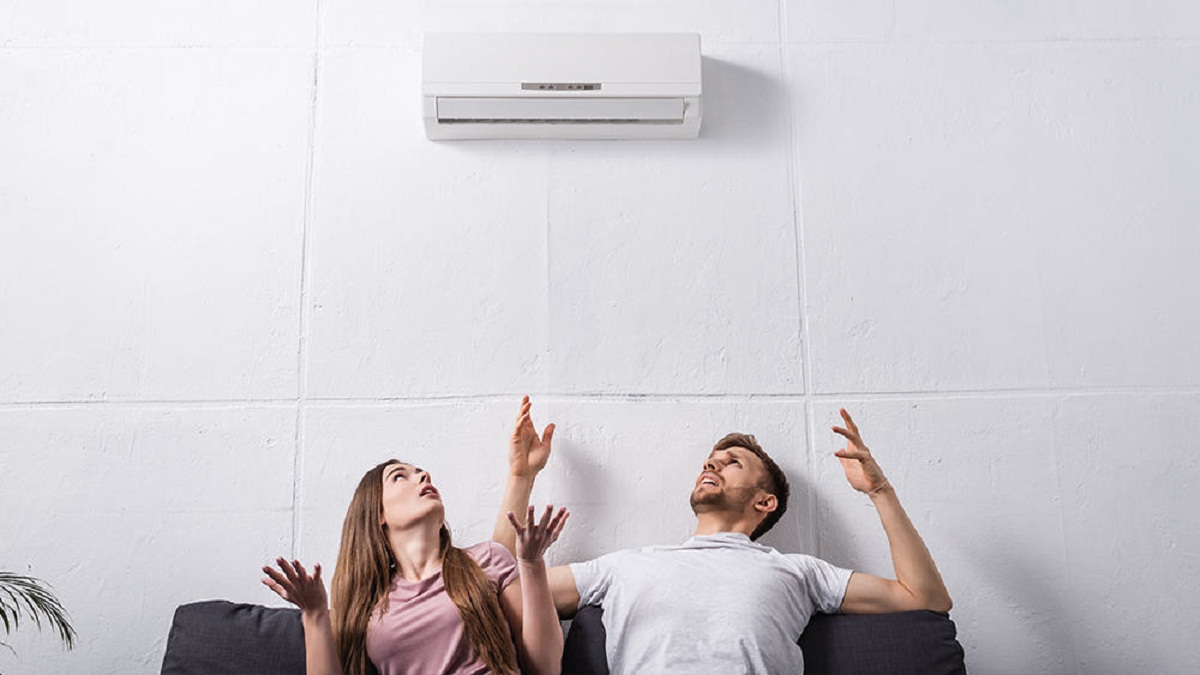
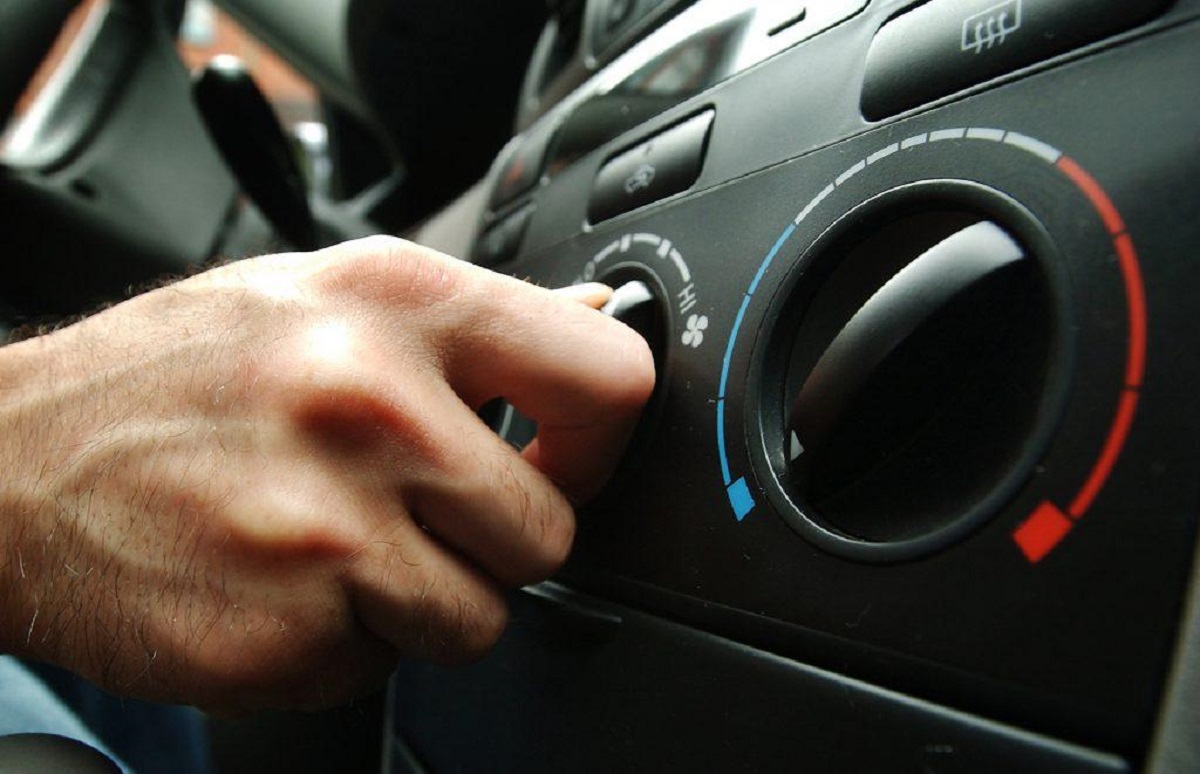

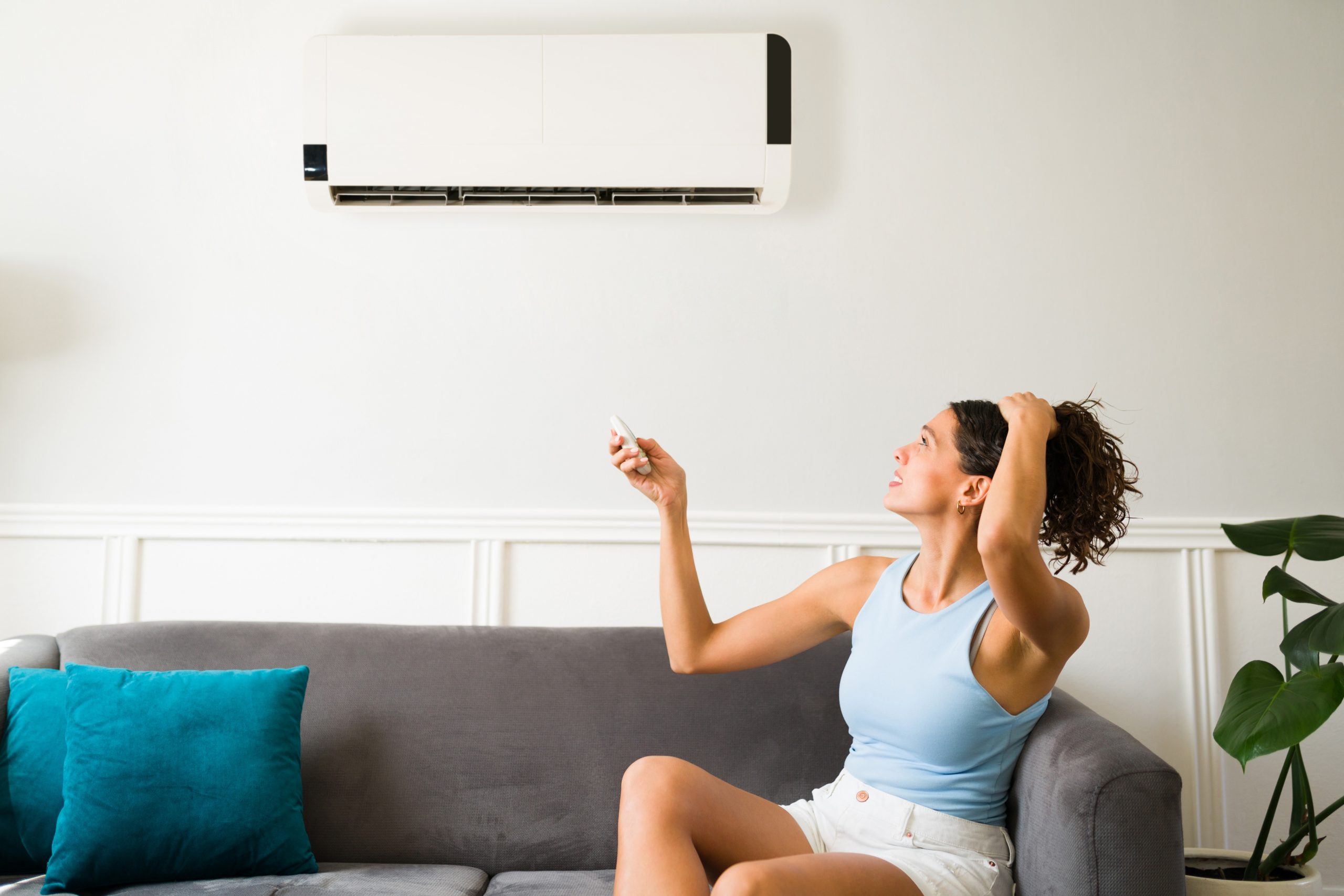
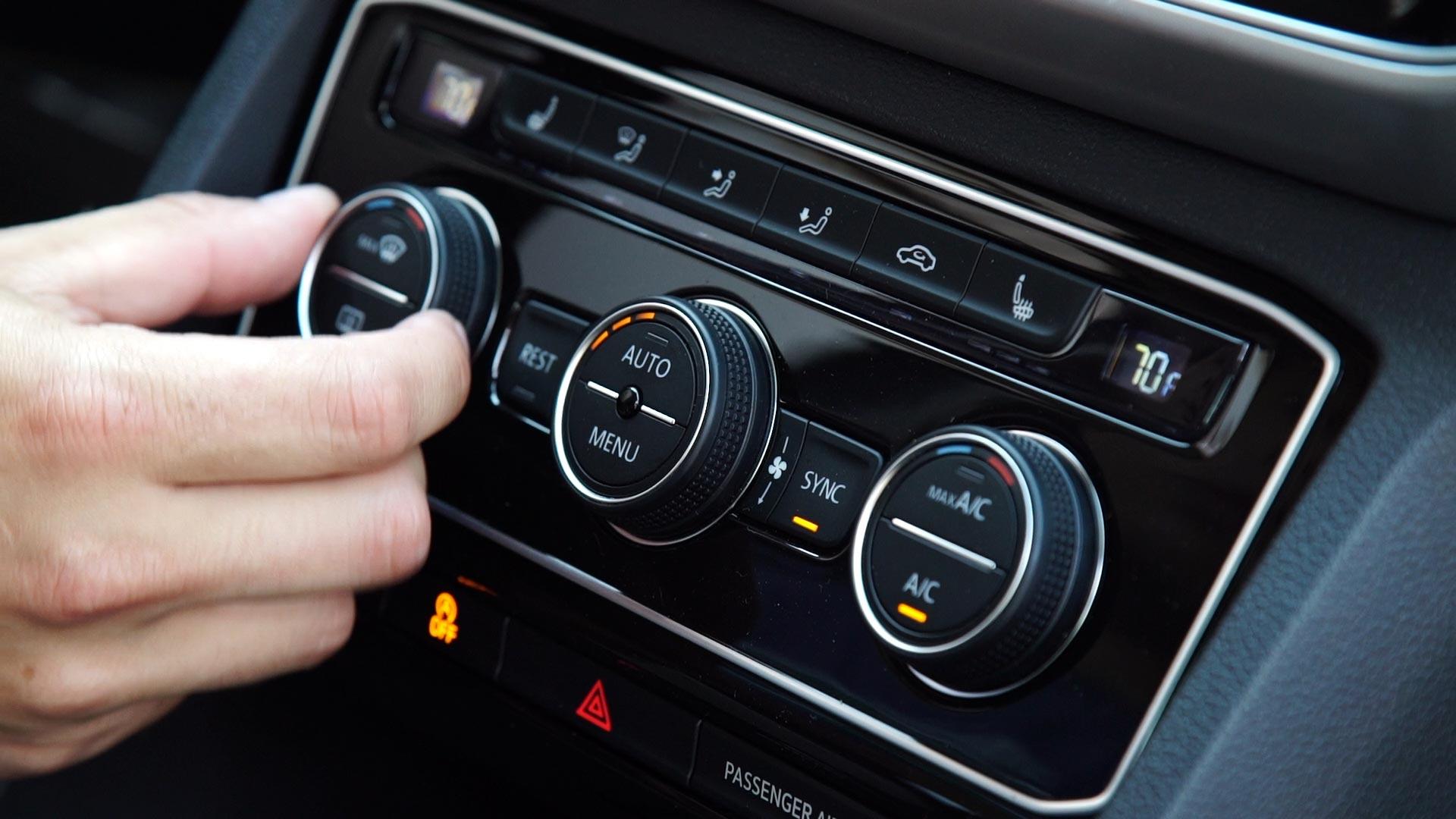


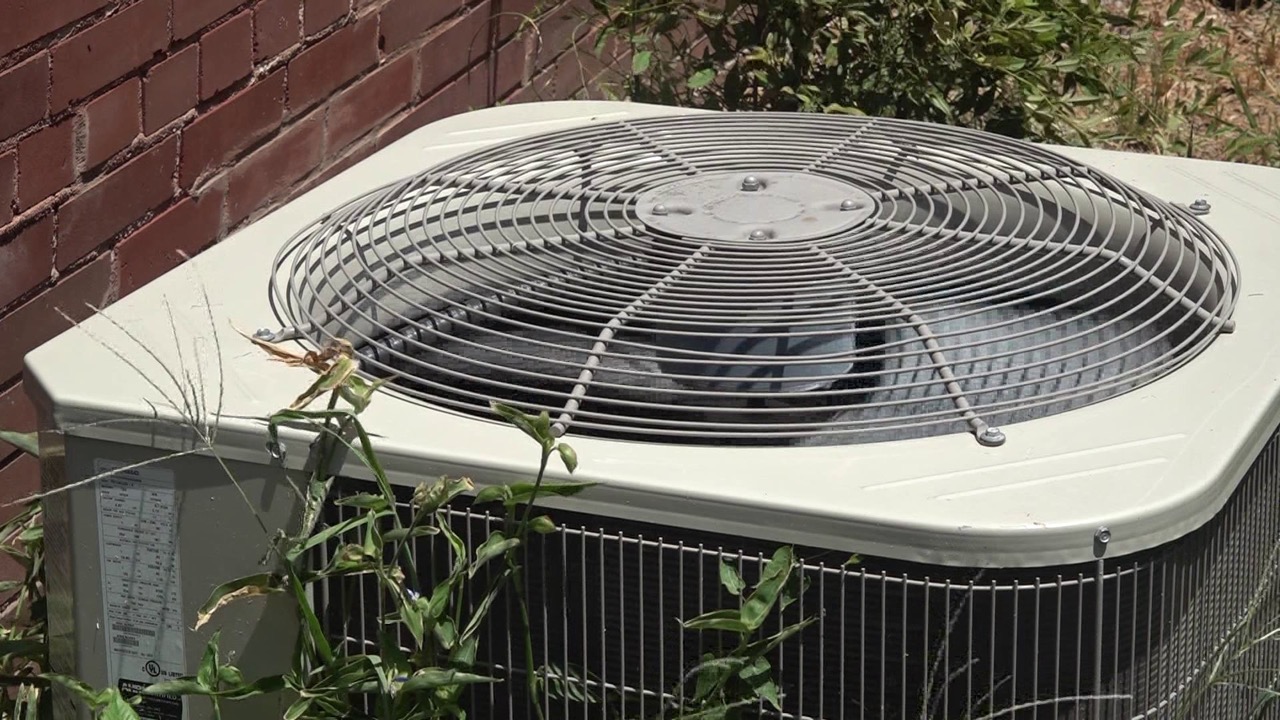
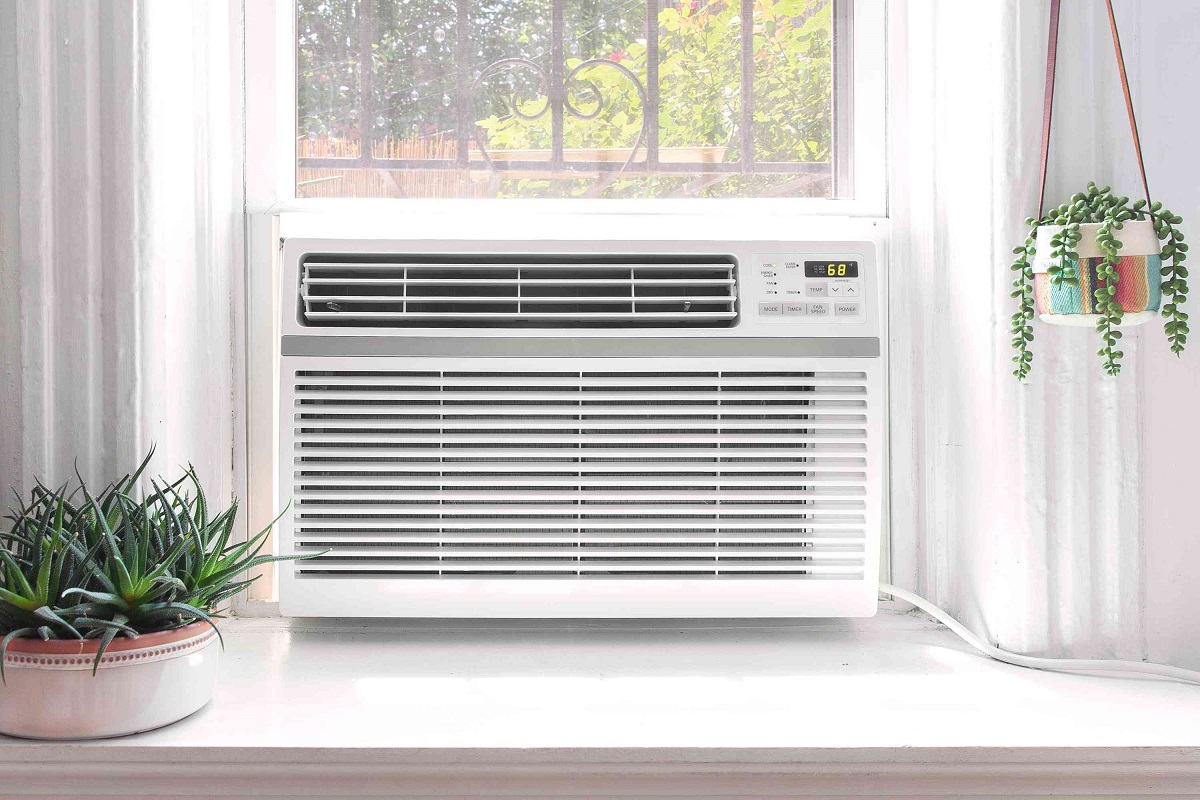

0 thoughts on “Why Is My Car Blowing Hot Air Out Of The Vents When AC Is Off”